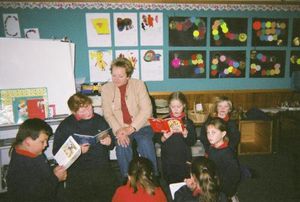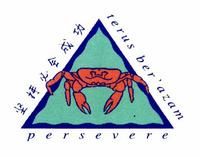Public Schools In Australia

We have a fantastic public school system in Australia and education for all is available at little or no cost to parents.
In 2021, many schools are now high tech and the Commonwealth government has just provided funding to ensure that all students can now have a laptop computer.
The smallest schools in Australia
Australia has one of the world’s biggest cities and some of the world’s smallest and most remote towns. It is a continent of great diversity. Our schools reflect this diversity. Our smallest schools meet the needs of Australian children living in isolated locations. These children may be living on remote Cattle or Farming Stations. Families may have chosen to leave busy city life and resettle in the privacy of remote Island locations. Australian Aboriginal children may be living on their own traditional lands in remote areas as their families have done for thousands of years.

Children attending small schools have the advantage of feeling safe and comfortable in the family-like structure. Multi age combined classes have advantages both socially and academically. Academically there are no disadvantages for Primary Age students attending small schools. Attendance rates and graduation rates are higher in small schools. Studies have repeatedly shown that children affected by poverty and other disadvantages fare better in smaller schools. There is better communication between parents and teachers in smaller schools and greater satisfaction with this involvement.
Let’s take a closer look at some of our smallest schools Australian children attend in each one of Australia's States.
New South Wales
The one pictured above is at Crowdy Head NSW

Some of our Australian Children are lucky enough to attend school on a Paradise Island. Lord Howe Island, which is a tiny Island 700 km north east of Sydney Australia, is listed as a World Heritage Site and attracts many tourists. There are 40 students from the population of 300 people. This is a very isolated small school with about 4 teachers managing two classes. Kindergarten, Year One and Two are grouped into one class, as are Years 3 -6. Older students study by correspondence materials under teacher supervision.
Western Australia
A polar opposite to Lord Howe Island School in many ways is Jigalong Remote Community School which is in the Pilbara region of Western Australia, 12 hours drive from Perth, the capital city of Western Australia. Jigalong is an Aboriginal Community of Martu people from the Western Australian Desert. This small school is unique in that the people continue traditional cultural practices and speak Martu Wangka as a first language. There are about six teachers and 120 students at the school. A novel by Doris Pilkington, "Follow the Rabbit-Proof Fence" was later made into an International movie, “Rabbit-Proof Fence” featuring the Jigalong School.

Another Western Australian school is Yandeyarra Remote Community School which is 130km south of Port Hedland in the North of Western Australia. The school is on a working cattle station - Yandeyarra Station. There are approximately 5 teachers and 40 students at the school from Kindergarten to year 12. They have a teacher’s aide and two Aboriginal Education Officers. Students from this school were very excited to make a film documenting their land and the local indigenous community, and the experiences and stories of the community Elders. The basketball court featured as important social center for the community. They received a Highly Commended award for, ‘contributing to broader community understanding of the local Indigenous culture’. Northern Territory
Over the last few hundred years of Australian History there has been a focus on Land ownership issues. About 35 years ago the Australian Government reverted its claimed ownership of traditional Aboriginal Lands known as Apungalindum Homeland Centre, about 240 kilometers north-east of Alice Springs in the Northern Territory. Aboriginal families have since returning to live on their traditional Land. The current population is 50 people. There is one school building, four community houses, a toilet block, a payphone, a workshop and a new satellite dish. Apungalindum is part of an Aboriginal owned cattle station poetically named 'Utopia Station'.
Tasmania
Many Australian towns have a history of mining. As the mines close down the towns reduce in size and availability of services, such as education. An example of this is Avoca, a small town of about 250 people in the mid-north of Tasmania. A main industry in the town now is making pavers out of left over material from the abandoned mines. Agriculture and forestry activities are also important to this town. There are 42 children at Avoca school. Only half of them live in town, the rest travel from nearby farming estates or small communities.
South Australia
The Gold rush era in Australia in the early 1800’s was the impetus for many new towns and travel stops along popular routes. Although the days of Cobb &co horse drawn carriages are long gone, the town of Kangaroo Inn, South Australia at a major intersection, is still a convenient rest stop for people traveling between Adelaide, Penola and Mt Gambier. The school has about 170 students. What is unique about this small school is that 99% of the students don’t live in the town. They travel on subsidized buses up to 60 km to get to school. Aside from tourism, their families are also involved in Fishing and Farming industries.
Queensland
Mt Fox State School is Queensland's smallest school with only 9 students! The school is part of a cluster of schools that gather together whenever possible.
Another small school for children in Queensland is St Rita’s Catholic School in South Johnstone, a small rural town 100 km South of Cairns and 9km South East of Innisfail. There are about 5 teachers and 40 students. Most of the families are working in the agriculture industry. Often both parents are working with the harder economic times we are facing. The school offers after school care until 6 pm to assist in this regard.
Children’s education in Australia
Australian Children start school at 5 years of age. They usually have been attending pre-school for a few days a week and have some basic literacy training and the social skills needed for this new environment.
They start in Kindergarten and stay in the Infants section of the school for grade 1 and 2. Then they move into Primary School for grades 3,4,5,6. After that they move into high school for grades 7,8,9 and 10, then Senior High school for year 11 and 12.
The Board of Studies is a government body in control of how we are taught. They design the syllabus for each subject. Lesson plans must address criteria set out in the Syllabus. The Board of studies prepares high school exams. This ensures a standard education throughout our country.
Children are now encouraged to stay at school for the whole 12 grades. However they are legally allowed to leave when they finish year 10 if they have a job or continue studying. After school they may get an apprenticeship with a tradesperson.
For example:
- Plumber
- Builder
- Hairdresser
- Mechanic
These apprentices will take on further study at a Technical College (TAFE) for a few days a week until they are qualified. An apprenticeship usually lasts for four years. After that you are a fully qualified tradesperson.
TAFE offers other courses such as Information Technology, Business Retail and Personal services, Construction & Transport, Manufacturing and Engineering, Arts & Media, Community Services & Health., Tourism & Hospitality, General Education.
A half year course usually will give you a Certificate level qualification. A Diploma is about 2 years of study. Qualifications can often be transferred as credit toward a University Degree. For example you may study basic Information Technology for 6 months and receive a Certificate III in Foundations of Information Technology. Then you could do another Certificate III in Multimedia, a Certificate III in PC Hardware and Software and Certificate IV in PC Networking. When you have these four certificates you will have a Diploma in Information Technology.
Some TAFE courses require you to have little or no work experience in the field you have chosen, nor do they require access to the workplace, and they do not require completion of a previous TAFE course. If you are a school leaver or young person, with little or no work experience one of these courses might be just what you need to get started in the transition from school to work.
If you can't get to a TAFE campus which is running the course you have chosen, or you need to do the work in your own there is a distance learning option called OTEN. This is possibly the answer for you if you need extra flexibility of studying and accessing information from home or elsewhere. OTEN does not require regular attendance on campus and combines, home or work study. However you will need to factor in that you need to attend for exams and some practical lessons, but even the exams can be arranged at your local school so this is a great option for some children and adults.
